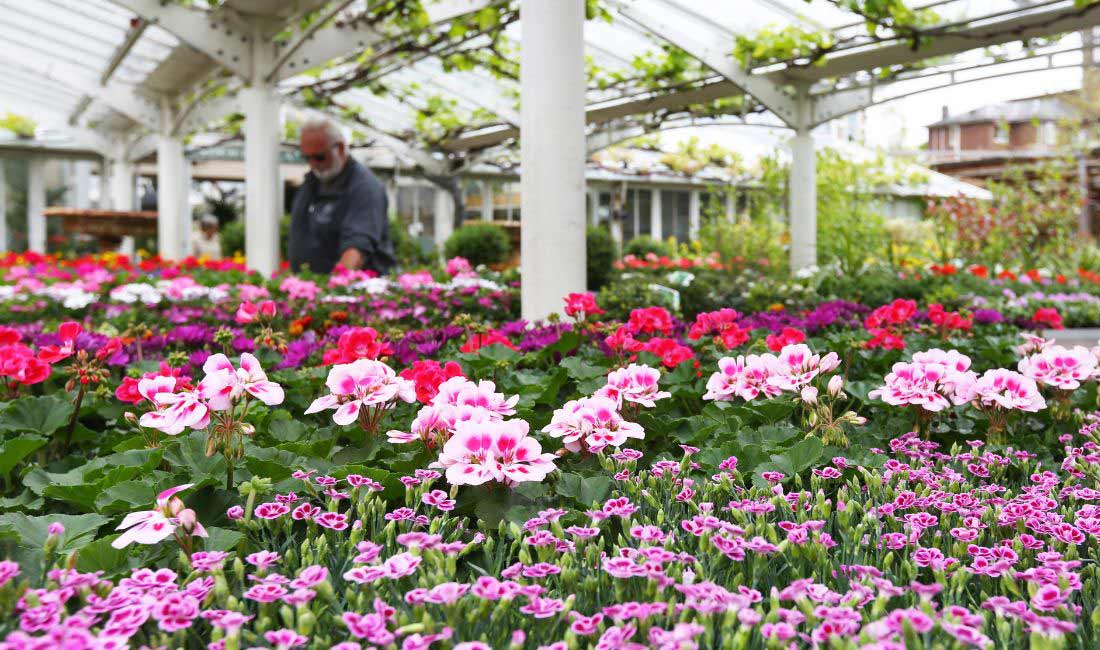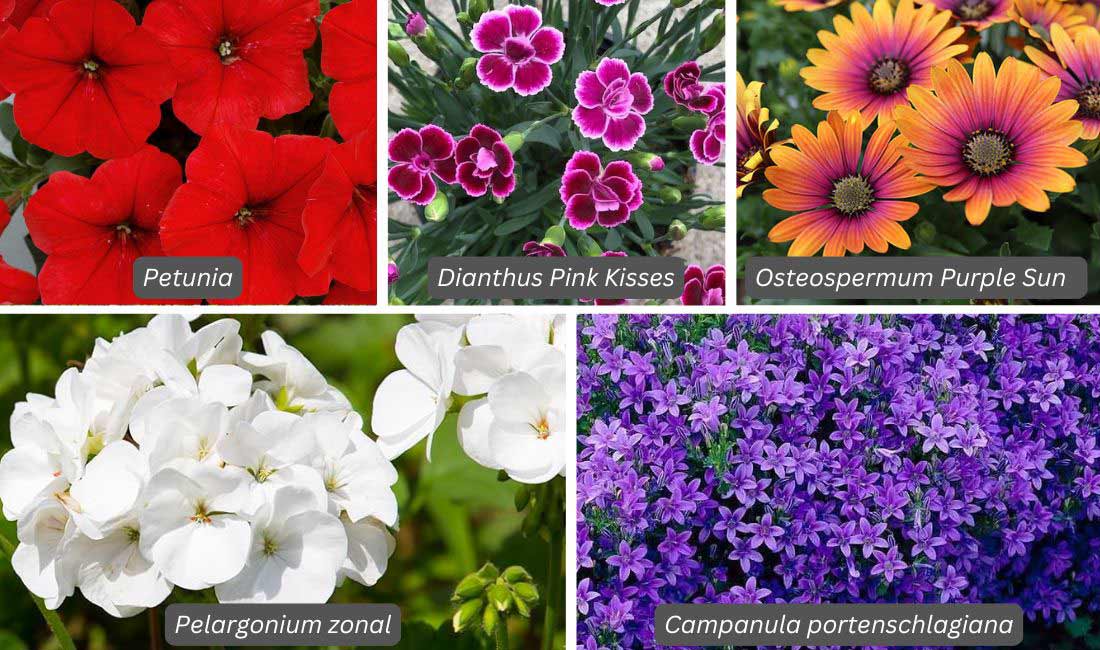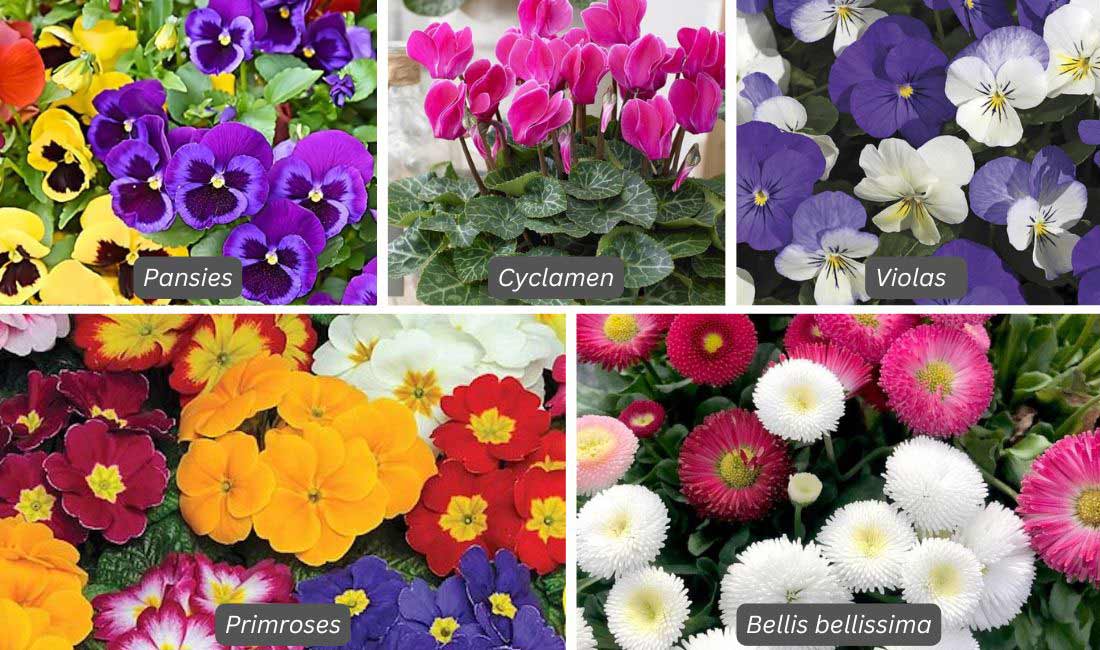
Bedding plants are the ‘fun’ plants of the gardening world! They are fast-growing plants for planting in containers or borders to create temporary, colourful displays and come in a dazzling range of colours and flower styles. Bedding plants are the showstoppers of your outdoor space and are ideal for window boxes, pots, hanging baskets … and much more.
Plants used for bedding tend to be annuals, biennials or tender perennials, the majority being annuals which means they usually grow and flower in one year. Bedding plants come as either summer varieties or hardy winter varieties, so you can alternate your planting between the two to have colour all year round.
What colour theme are you going for this season? A monochromatic colour scheme or a mixed one? Cool pastel colours or hot vibrant colours? Have fun designing your theme – the choice is yours and anything goes!
Caring for Summer Bedding
From March onwards Clifton Nurseries sell a wide range of summer bedding plants, ready-grown in small pots and ideal for creating instant impact. Always use fresh compost and either wait until the risk of frosts is over before planting, or keep an eye on the weather forecast and, if frost is forecast, protect the plants overnight with horticultural fleece.
Once planted, the aim is to keep the plants blooming as long as possible, so it’s important to water, feed and deadhead on a regular basis:
Water regularly in dry warm spells, probably daily, but avoid the plants standing in water. Even after rain, check the soil, as some foliage can act like an umbrella, preventing the water from reaching the surface. Ideally, water in the evening when evaporation loss is less, but don’t leave it until then if the soil is very dry. In summer heatwaves you may need to water twice a day.
Assuming you planted the bedding plants in fresh compost, the nutrients in the compost will last for 4 to 6 weeks. Following this period, feed the plants weekly – ideally with a potassium rich feed such as Tomato Feed, interspersed with a balanced fertiliser containing nitrogen, phosphorus and potassium. Our team are happy to advise on our range of different fertilisers.
Remove (deadhead) any fading or dead flowers on a regular basis to keep the plants blooming – in the peak of the growing season you may need to deadhead a couple of times per week. If you don’t deadhead your flowers, the plants will eventually stop producing new flowers – so don’t forget!
Be sure to check for pests such as slugs and aphids on a regular basis as they love fresh new growth. Either remove them by hand or use appropriate remedies – a range of which are available from our garden centre.
Caring for Winter Bedding
The best time to plant winter bedding plants is in the autumn, giving them time to establish before the coldest winter weather. Assuming you’re planting outside, be sure to purchase the cold-hardy varieties such as Pansies, Violas and Primroses. Ensure the soil is well-drained to avoid waterlogging with the winter rains.
Once planted:
Water sparingly, as winter bedding plants generally require less water than summer bedding plants – check the soil moisture regularly and water only when the top layer of the soil feels dry.
Winter bedding plants do not require regular feeding, but do require a light application of slow-release fertiliser in autumn to help them get established and provide continued nutrients.
Most winter bedding plants are cold-hardy but in very cold, frosty conditions they benefit from being covered with horticultural fleece. In addition, a layer of mulch around the plants (such as bark) will help to insulate the roots from cold temperatures.
Remove (deadhead) any fading or dead flowers on a regular basis to keep the plants blooming.
Our Summer Bedding Favourites
With so very many summer bedding plants available, it’s hard to choose our favourites, but there are some that we just don’t want to be without!
Osteospermum (African Daisies) – these sun-loving flowers will bloom all spring and summer in a range of cheerful, bright colours including orange, red, purple, yellow, pink and white. Ideal for cut flowers for indoor displays and much loved by insects as well as humans. Deadhead regularly to prolong flowering. Size differs according to varieties but generally up to about 40cm high and 50cm wide.
Campanula (Bellflowers) – available as either low growing or medium growing varieties in purple, white or pink, Campanula have numerous flowers, creating a very colourful effect. Easy to grow and trouble free, Campanula thrive in either sun or semi-shade so deserve a place in pretty much any garden.
Petunia – available in a myriad of vibrant colours and much loved for adding a cheerful touch to any outdoor space, whether grown in the ground, in containers or in hanging baskets. They are fast growing and bloom from late spring well into autumn, provided they’re fed and watered and deadheaded regularly. A very popular favourite!
Pelargonium zonal – another much-loved favourite, particularly so because of requiring less water than some other bedding plants. In the right compost and fed regularly with a high potash feed, they will flower from spring right through to late autumn. Beautiful (and bountiful) large clusters of single and two-toned colour flowers in a range of bright colours including pink, white, red and purple.
Dianthus (Pinks) – despite being a perennial, often treated as an annual. Popular for their mat of foliage topped by a mound of small, often fragrant flowers in a range of pink, red and white shades. Thriving in sun or partial shade, and blooming from late spring through the summer – their compact size makes them ideal for any outdoor space.

Our Winter Bedding Favourites
Winter bedding plants are all the more desirable as they flower in winter, so brightening up the garden at a time of year when there is generally less colour.
Cyclamen – hardy outdoor cyclamen come in a range of pinks, reds and whites and, being low growing groundcover plants that thrive in shade, they’re ideal for underplanting trees and shrubs as well as growing in containers. Plant more than you think you need to create a colourful carpet effect.
Winter Pansies and Violas – available in an array of cheerful colours and varieties, pansies and violas are a classic winter favourite and rightly so. These hardy plants can bloom through frost and even through light snow. Generally, pansies refer to varieties with much larger flowers, while violas have blooms that are much smaller but produced in greater numbers.
Primroses – flowering from winter right through to spring, primroses can tolerate some frosts and even light snow. Coming in a range of vibrant colours, they are ideal for brightening up borders and containers. Colourful, bright and cheerful it’s easy to see why they’re so popular.
Bellis (English Daisies) – easy to grow and flowering from winter through to summer, and sometimes even on until autumn, these compact plants come in a wide range of cheerful colours. Ideal for beds, borders, pots and hanging baskets. Remember to deadhead them and you’ll be rewarded with a long-lasting display of flowers.

Clifton Nurseries Garden Centre
London, W9 2PH
Bank Holidays open until 7pm
0207 432 1867
Mon-Fri 9am - 5.30pm; Sat 9am - 7pm; Sun 10.30am - 4.30pm
Clifton Nurseries Garden Services
London, W9 2PX
